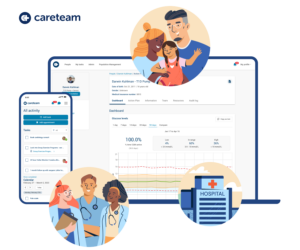

We are seeing headlines shaping the narrative about Medicare Advantage’s (MA’s) challenging headwinds and its purported demise. While one could be concerned and assume this is the beginning of the end, you can rest assured it’s not. MA is not dead. It’s very much alive, and in fact, I predict it will continue growing and even thriving. Need proof? Just look at the numbers. Growth in the senior population of the United States is irrefutable, and MA enrollment increased by 22.2 million beneficiaries (337%) from 2006 through 2022. Compare that with traditional Medicare enrollment declining by 1.0 million (−2.9%) over that same period.
Why are people choosing MA? It’s all about the benefits. MA plans offer richer benefits that aren’t included with traditional Medicare, such as prescription drug, dental and vision coverage. MA bestows immense value on seniors, many of whom live on low fixed incomes. In 2023, the average rebate for MA plans per member per month is $196, the highest in the program’s history. What’s more, MA plans often have lower out-of-pocket costs, more coordinated care and better health outcomes relative to traditional Medicare. For example, according to a 2022 report, MA beneficiaries experience a 43% lower rate of avoidable hospitalizations for any condition and a 21% higher rate of seeing a physician within 14 days of a hospital discharge compared to Medicare fee-for-service.

Source: U.S. Census Bureau, Population Estimates and Projections

Source: USC Medicare Advantage study
The design of Medicare Advantage is strong, and the age wave is real; MA just needs to be executed as intended, providing high-quality care at a low cost, continuously prioritizing innovation and sharpening the focus on quality.
We’ve been here before
After working and innovating in health care for 30 years, I know that what we’re seeing is cyclical in nature. This is a space that’s always been in a state of constant change.
In 1997, the Balanced Budget Act (BBA) introduced Medicare+Choice, later known as Medicare Advantage. It also reduced payment rates to plans, established new risk-adjustment measures based on health status and created an annual enrollment period. In 2003, the Medicare Prescription Drug, Improvement, and Modernization Act (MMA) renamed Medicare+Choice to Medicare Advantage, introduced Medicare Part D for prescription drug coverage and increased funding and incentives for private insurers. In 2010, the Affordable Care Act (ACA) reformed MA by implementing payment reforms, a star rating system for quality and changes to enrollment. It included another major restructuring of the MA program and significant cuts in MA plan payments. This year, the final 2024 Payment Rate Announcement and Part C and D Rule expect to adjust payments to MA plans and phase in risk adjustment methodology, among other changes.
The only thing that has been constant is change, and the winners are the ones that continuously adapt.
How winners will prevail
For the past 30 years, even with the various headwinds over time, consistent winners in MA have adapted and adjusted to new standards required for success. Now is no different. Short-term headwinds are just that – short-term. It’s important to focus on how winners in this space can and will prevail. Here are three areas to focus on right now:
- Capitalizing on a growing total addressable market: The market will only grow from here. Irrespective of challenges or other events, more seniors will continue to age into Medicare. Indeed, Medicare Advantage enrollments are projected to outpace original Medicare.
- Sharpening the focus on quality: There’s an overall sense that MA needs to return to its roots – providing seniors with high-quality care at a low cost. The bar on quality is rising not only from a regulatory perspective but also from a consumer perspective. Today’s seniors simply expect more for their money – better outcomes, more personalization and efficiency. They are tech savvier and will increasingly consider easy access mere table stakes. This is why quality will be the true differentiator. Focusing on quality requires an authentic senior-centric culture. Every decision has to be made with seniors at the heart of it.
- Prioritizing innovation: When you’re constantly putting yourself in the shoes of your members, you’re identifying areas to improve, such as creating more access and personalized benefits and experiences. In order to create efficiencies and deliver better care at a lower cost, MA plans must push health care delivery innovation in meaningful ways that match the speed and creativity seen in other industries. Innovation matters and helps plans differentiate themselves. What does that look like? Innovation can look like predictive analytics that help identify the most vulnerable to provide better care and reduce costs. Innovation can look like providing holistic health care delivery that improves a senior’s lifestyle, such as food delivery, home visits and transportation.
MA will never sit still. It has experienced headwinds in the past and will experience them again, but companies that are purpose-built to deliver high quality at a low cost for beneficiaries will continue to win and drive a win-win for seniors too.
Photo: designer491, Getty Images


















